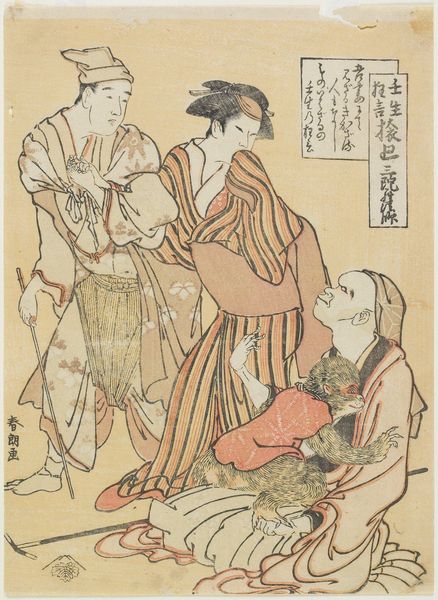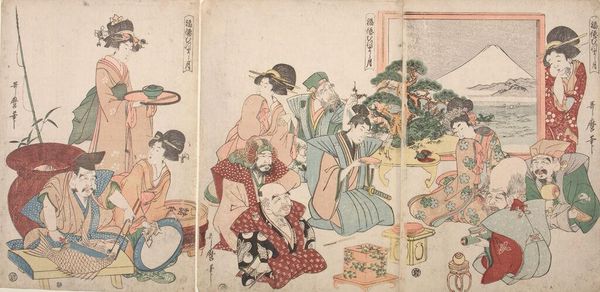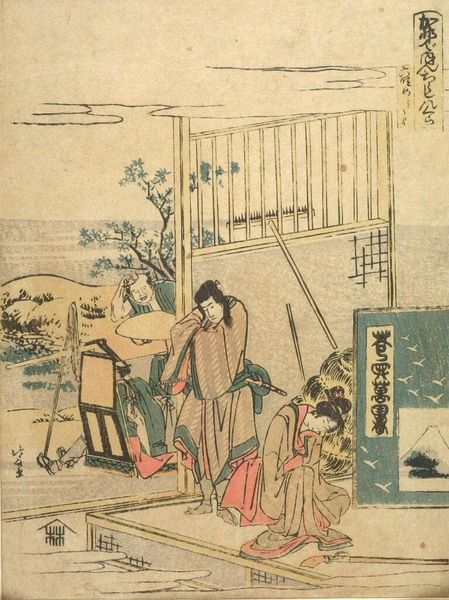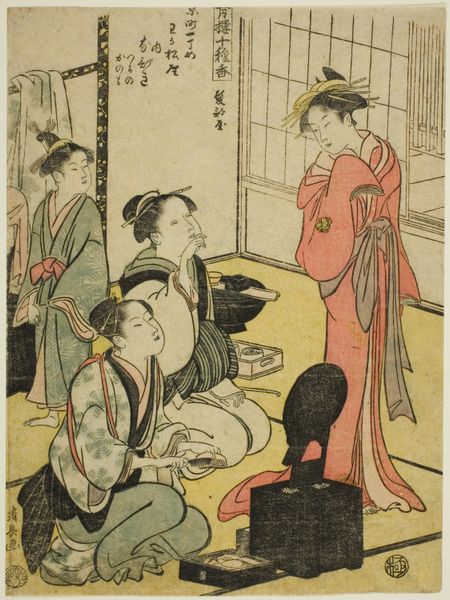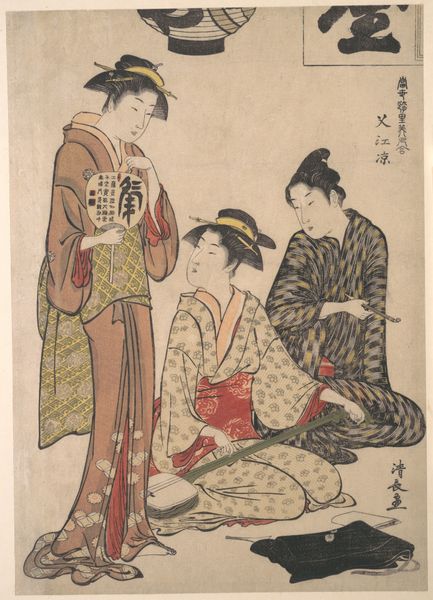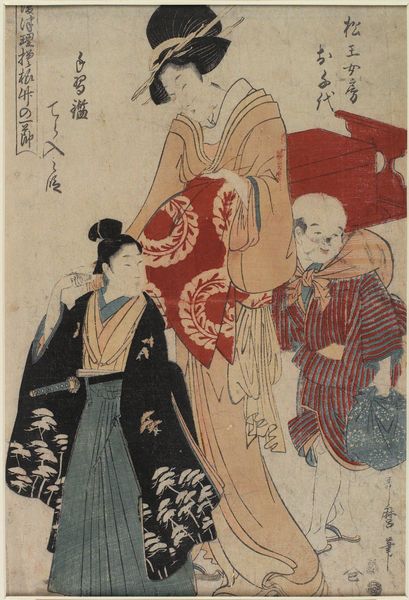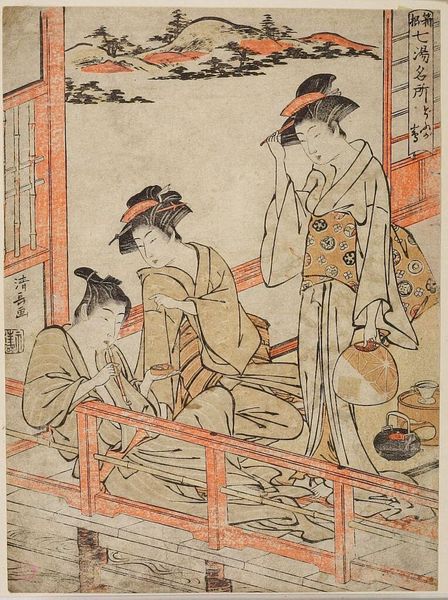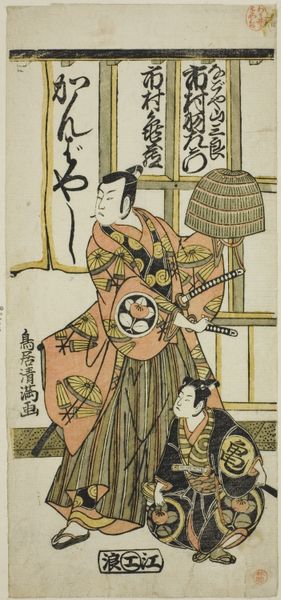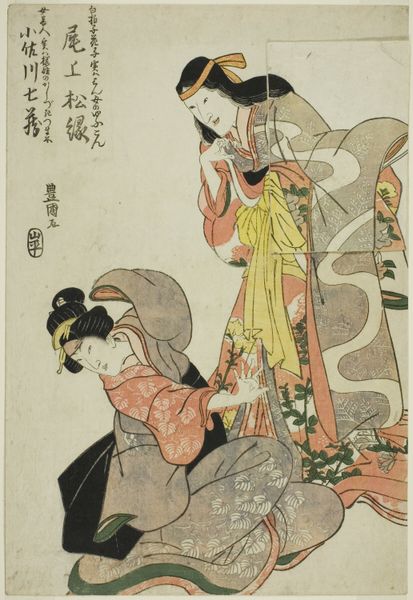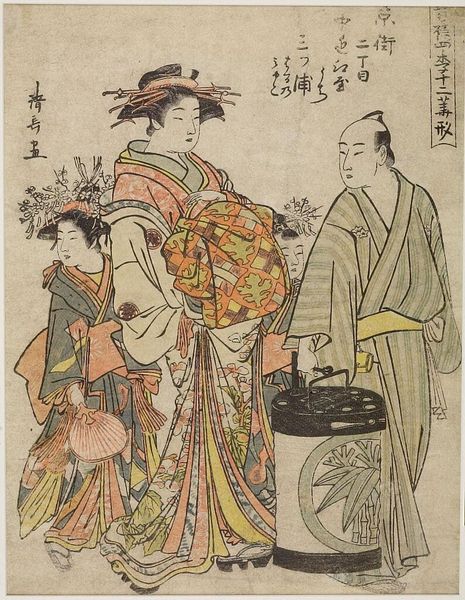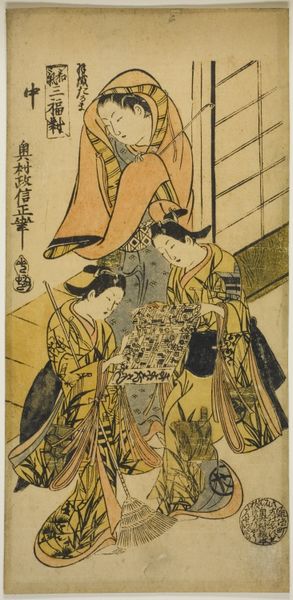
Seven Gods of Good Fortune and Otafuku celebrating New Year's from the series Prosperous and Harmonious Month (Fukutoku mutsumashi tsuki) Woodblock print (nishiki-e) left sheet of triptych; ink and color on paper
Dimensions: Asian and Mediterranean Art
Copyright: CC0 1.0
Curator: This 18th-century woodblock print, "Seven Gods of Good Fortune and Otafuku celebrating New Year's," by Kitagawa Utamaro, shows a lively scene. What strikes you first? Editor: The depiction of labor, the butchering of the fish, the serving of food—it feels very grounded and human. How can we understand this portrayal in its cultural context? Curator: This domesticity reflects the changing social dynamics of the Edo period. Utamaro challenges the traditional depictions of idealized beauty by including elements of the working class and a figure from folk religion. What does that imply about the intended audience? Editor: It suggests a broader audience, maybe outside the aristocracy, which is a significant shift. Curator: Exactly. Utamaro’s work becomes a window into the lives of everyday people, elevating their experiences. It makes me wonder, does it challenge or reinforce existing social hierarchies? Editor: That’s a perspective shift for me. Thanks! Curator: Consider how the act of depicting the working class can both celebrate and possibly exoticize them. Art creates its own reality.
Comments
No comments
Be the first to comment and join the conversation on the ultimate creative platform.

